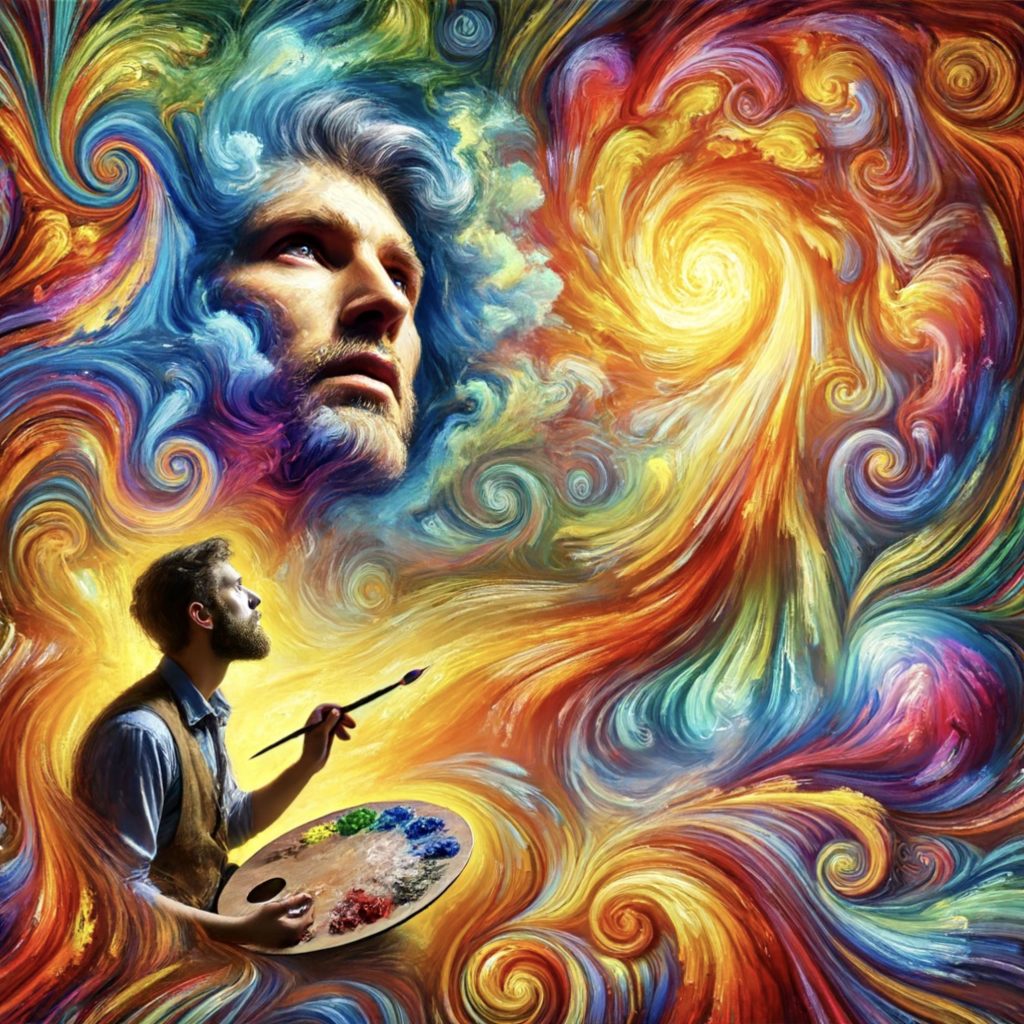
“Art is the most intense mode of individualism that the world has known,” wrote Oscar Wilde. For many artists, this intense individualism is often intertwined with the use of mind-altering substances. The interplay between drugs and creativity is a long and storied one, filled with tales of both profound inspiration and tragic downfall. In this article, we’ll explore how drugs have influenced the creative processes of artists, writers, musicians, and other creatives throughout history, examining the psychological effects, notable case studies, ethical debates, and contemporary perspectives.
Historical Context
In ancient and indigenous cultures, the use of psychoactive substances was often deeply embedded in spiritual and ritualistic practices. Shamans and medicine men utilized plants like peyote and ayahuasca to facilitate visions and communication with the spiritual world. These altered states of consciousness were believed to bring insights and inspiration, enhancing the creative output of those who partook in these sacred ceremonies. Similarly, in ancient Greece, opium was used for both medicinal and recreational purposes, with some historians suggesting it played a role in the creation of epic poetry and dramatic works.
The 19th and early 20th centuries saw a romanticization of drug use among artists and writers. The Romantic poets, including Samuel Taylor Coleridge and Lord Byron, often turned to opium and laudanum to fuel their literary creativity. Coleridge’s famous poem “Kubla Khan” is said to have been inspired by an opium-induced dream. In the bohemian circles of Paris, absinthe became known as the “green fairy,” inspiring painters like Vincent van Gogh and writers like Ernest Hemingway to push the boundaries of their work.
The mid to late 20th century marked a significant shift in the relationship between drugs and creativity, particularly with the rise of the Beat Generation and the psychedelic movement. Beat writers like Jack Kerouac and Allen Ginsberg experimented with a variety of substances, seeking to break free from societal norms and explore new dimensions of consciousness. The 1960s saw the widespread use of psychedelics like LSD, championed by figures such as Timothy Leary and embraced by musicians like The Beatles, who credited the drug with profoundly influencing their music and artistic direction.
Another notable period was the Jazz Age, where musicians like Charlie Parker and Miles Davis used heroin as a means of coping with the pressures of their careers while simultaneously seeking new artistic heights. The use of drugs in this era often came with a high price, as many artists struggled with addiction and its devastating effects on their lives and work. Despite these challenges, the creative innovations that emerged from this period continue to influence music to this day.
Psychological Effects of Drugs on Creativity
The psychoactive effects of drugs like LSD, psilocybin, and cannabis are known to alter perception, cognition, and mood. These substances can enhance sensory experiences, dissolve the boundaries between self and surroundings, and provoke intense emotional responses. Such alterations in consciousness can lead to what many describe as “breakthroughs” in creative thinking, allowing artists to see the world in novel ways and generate unique ideas that they might not have accessed otherwise.
Scientific studies have explored the relationship between drug use and creativity, with mixed results. Some research suggests that moderate doses of psychedelics can enhance divergent thinking, a key component of creativity that involves generating multiple solutions to a problem. The activation of serotonin receptors in the brain by psychedelics is believed to play a role in this process, increasing connectivity between different brain regions and facilitating the formation of novel connections and ideas.
However, the effects of drugs on creativity are not universally positive. While some individuals may experience heightened creativity, others may encounter anxiety, confusion, or impaired judgment. The impact of drugs on creativity is highly individual and can vary widely depending on factors such as dosage, setting, and the user’s psychological state. Furthermore, the long-term effects of regular drug use on cognitive function and creative output remain a topic of ongoing debate and research.
Despite the potential benefits, the use of drugs to enhance creativity carries significant risks. Addiction, mental health issues, and legal consequences are all serious considerations that cannot be ignored. While some artists may successfully integrate drug use into their creative process, others may find their lives and careers derailed by substance abuse. The balance between inspiration and the destructive potential of drugs is a delicate one, often leading to a complex and fraught relationship.
Case Studies of Notable Creatives
Samuel Taylor Coleridge is perhaps one of the most well-known examples of a writer whose creative output was deeply influenced by drugs. Coleridge’s use of opium not only helped alleviate his chronic health issues but also fueled his imaginative works. “Kubla Khan,” a poem rich with vivid imagery and fantastical elements, was reportedly composed during an opium-induced trance. However, Coleridge’s dependency on the drug also led to significant personal and professional struggles, highlighting the double-edged nature of substance use.
Hunter S. Thompson, the father of Gonzo journalism, was infamous for his prolific drug use. His seminal work, “Fear and Loathing in Las Vegas,” captures the chaotic and surreal nature of his drug-fueled adventures. Thompson’s writing style, characterized by its raw, unfiltered perspective, was undeniably shaped by his experiences with substances. However, his life was also marked by the darker side of addiction, leading to numerous legal and health issues that ultimately overshadowed his career.
In the realm of music, The Beatles’ experimentation with LSD in the mid-1960s led to a significant shift in their musical style. Albums like “Revolver” and “Sgt. Pepper’s Lonely Hearts Club Band” are often cited as milestones in psychedelic music, with their innovative use of studio techniques and unconventional song structures. John Lennon and George Harrison, in particular, spoke openly about how their use of psychedelics expanded their creative horizons, allowing them to explore new sounds and lyrical themes that were previously unimaginable.
Visual artists have also been profoundly influenced by drugs. Salvador Dalí, known for his surrealist masterpieces, experimented with various substances to tap into his subconscious mind. His iconic melting clocks and dream-like landscapes reflect the altered states of perception he sought to achieve through drug use. Similarly, Jean-Michel Basquiat’s heroin use was both a source of inspiration and a destructive force in his life, contributing to his unique artistic vision while also leading to his untimely death.
Ethical and Health Considerations
The use of drugs to enhance creativity raises numerous ethical and health considerations. On one hand, the potential for profound artistic breakthroughs and the enhancement of creative thinking can be enticing. On the other hand, the risks associated with drug use, including addiction, mental health issues, and legal consequences, cannot be ignored. Artists who choose to use drugs must navigate a complex landscape where the line between inspiration and self-destruction is often blurred.
One of the primary health risks associated with drug use is addiction. Many artists have fallen into the trap of dependency, finding that their initial use of substances to spark creativity eventually leads to a need to use just to function. The toll on physical and mental health can be severe, with long-term consequences that impact both personal and professional lives. Stories of talented individuals who have succumbed to addiction serve as cautionary tales, reminding us of the high stakes involved.
The ethical implications of using drugs to enhance creativity are also a topic of debate. Some argue that relying on substances diminishes the authenticity of the creative process, suggesting that true artistic expression should come from within rather than from external influences. Others contend that creativity is a deeply personal experience, and if drugs help artists access new ideas and perspectives, then their use can be justified. The moral landscape is complex, with no clear-cut answers.
Furthermore, the legal ramifications of drug use cannot be overlooked. Many substances that artists have historically used to enhance creativity are illegal, leading to potential legal troubles for those who choose to partake. The criminalization of drug use adds another layer of risk and consequence, affecting not only the individuals involved but also their families and communities. As society continues to grapple with the complexities of drug use and its regulation, artists find themselves at the intersection of creativity and law.
Contemporary Perspectives
In today’s creative community, attitudes towards drugs and their role in artistic processes are diverse and evolving. Some contemporary artists openly embrace the use of substances, drawing parallels between their work and that of past generations who sought inspiration through altered states of consciousness. Others are more cautious, recognizing the potential for harm and choosing to explore alternative methods of enhancing creativity without the use of drugs.
Modern creatives often turn to practices such as meditation, mindfulness, and other cognitive techniques as alternatives to drug use. These methods offer ways to access altered states of consciousness and enhance creative thinking without the associated risks of substance abuse. Advances in neuroscience and technology also provide new tools for stimulating creativity, such as brainwave entrainment and virtual reality experiences designed to inspire and innovate.
Interviews and quotes from contemporary artists reveal a range of perspectives on the issue. Some view drugs as a valuable tool for breaking down mental barriers and accessing new ideas, while others emphasize the importance of maintaining a clear and healthy mind to produce their best work. The diversity of opinions reflects the ongoing debate within the artistic community about the most effective and sustainable ways to foster creativity.
As society’s understanding of drugs and their effects continues to evolve, so too does the conversation around their use in creative processes. The legalization of cannabis in many parts of the world has led to increased acceptance and experimentation among artists, while the resurgence of interest in psychedelics for therapeutic purposes has reignited discussions about their potential for enhancing creativity. The future of creativity and substance use is likely to be shaped by these shifting cultural and scientific landscapes.
Conclusion
The relationship between drugs and creativity is a complex and multifaceted one, filled with both promise and peril. Throughout history, artists, writers, musicians, and other creatives have turned to substances to enhance their work, seeking inspiration and insight through altered states of consciousness. While some have found profound success and innovation, others have faced the devastating consequences of addiction and mental health struggles.
Reflecting on this intricate interplay, it becomes clear that the role of drugs in creative processes cannot be easily defined. Each individual’s experience is unique, shaped by personal, psychological, and societal factors. As we move forward, the challenge will be to balance the potential benefits of drug use with the significant risks, finding ways to support and nurture creativity in ways that are both safe and sustainable.
For those interested in delving deeper into this topic, a wealth of resources is available, from biographies of notable artists to scientific studies on the effects of drugs on the brain. By continuing to explore and understand the nuanced relationship between drugs and creativity, we can better appreciate the intricate tapestry of human expression and innovation.
Additional Resources
- For further reading, consider books such as “High Art: Drugs, Desire, and a Renaissance of Creativity” by Ted Holland and “Altered States: Creativity Under the Influence” by James Shreeve.
- Documentaries such as “DMT: The Spirit Molecule” and “The Substance: Albert Hofmann’s LSD” provide fascinating insights into the historical and cultural impact of psychoactive substances.




